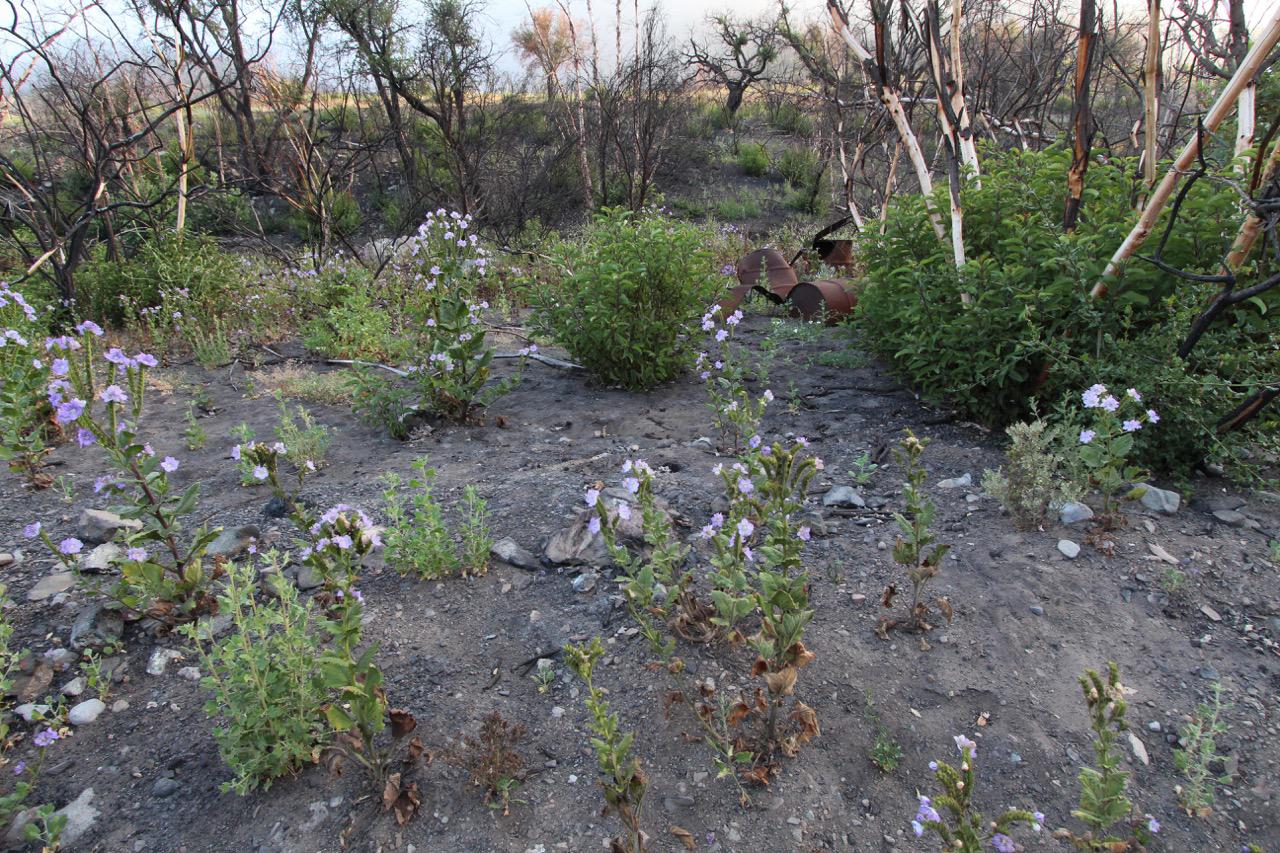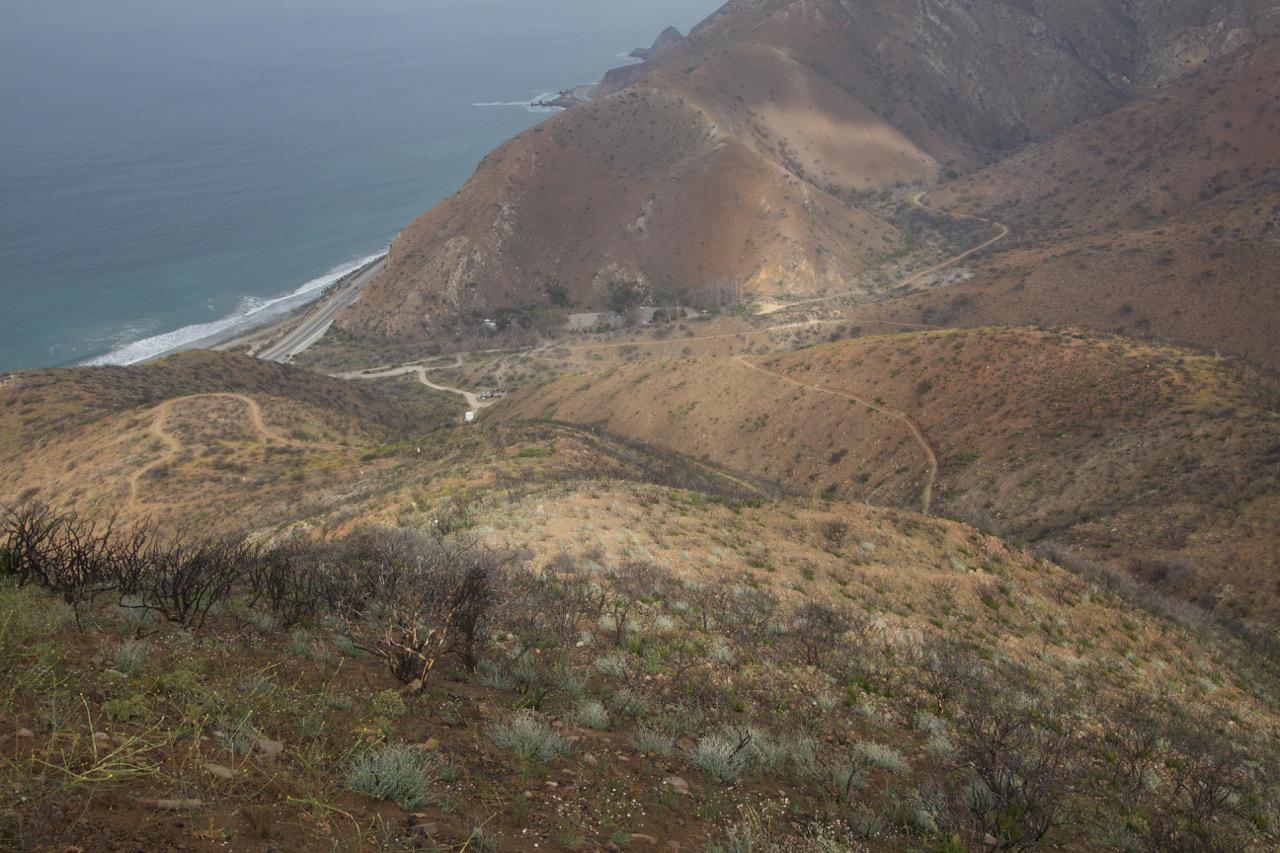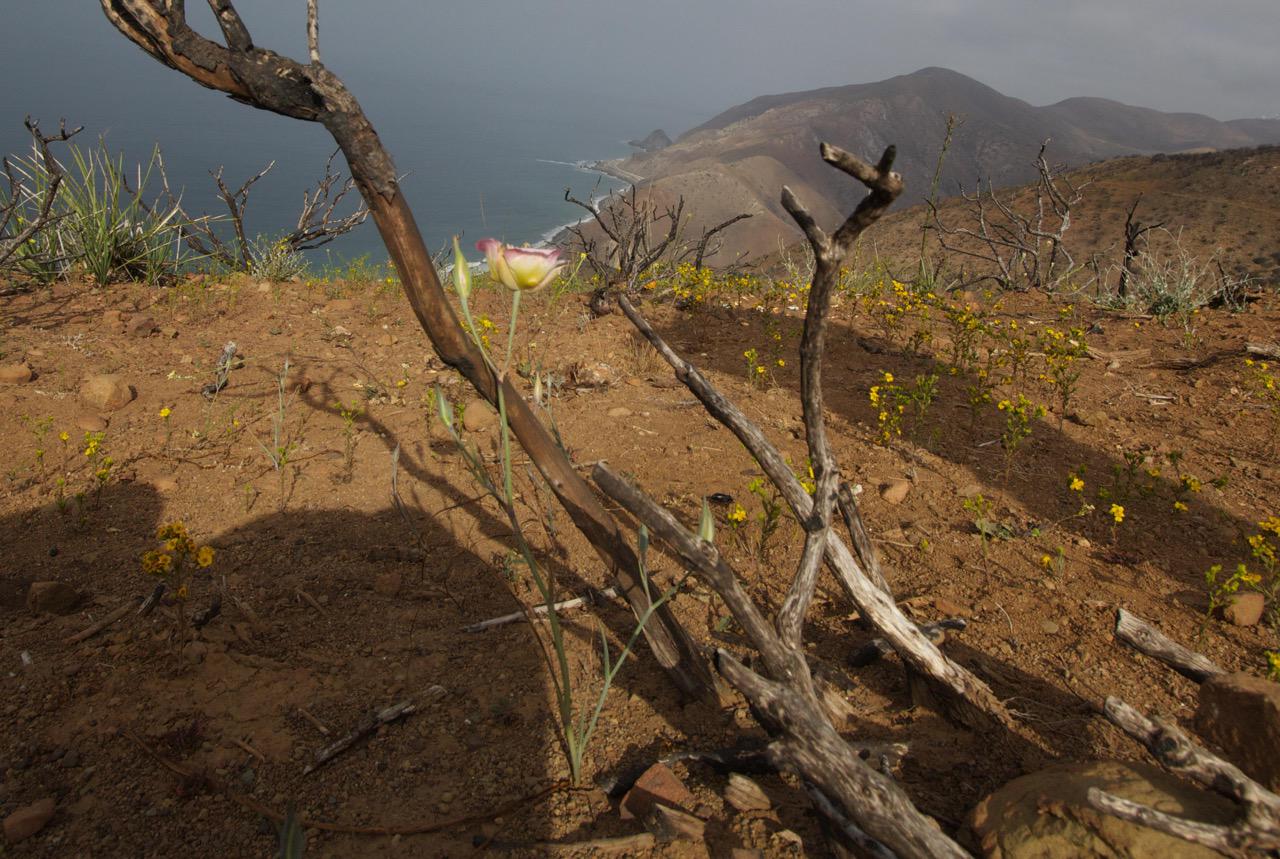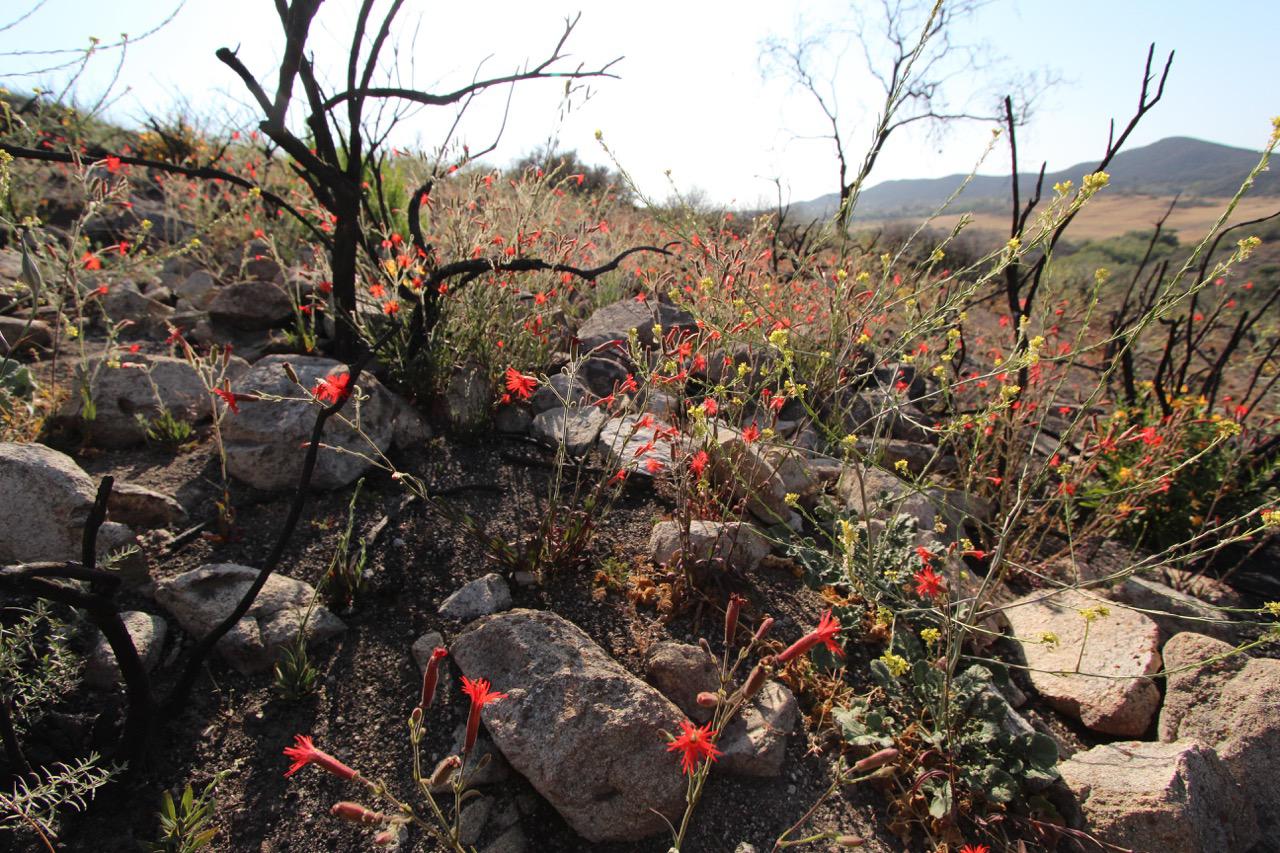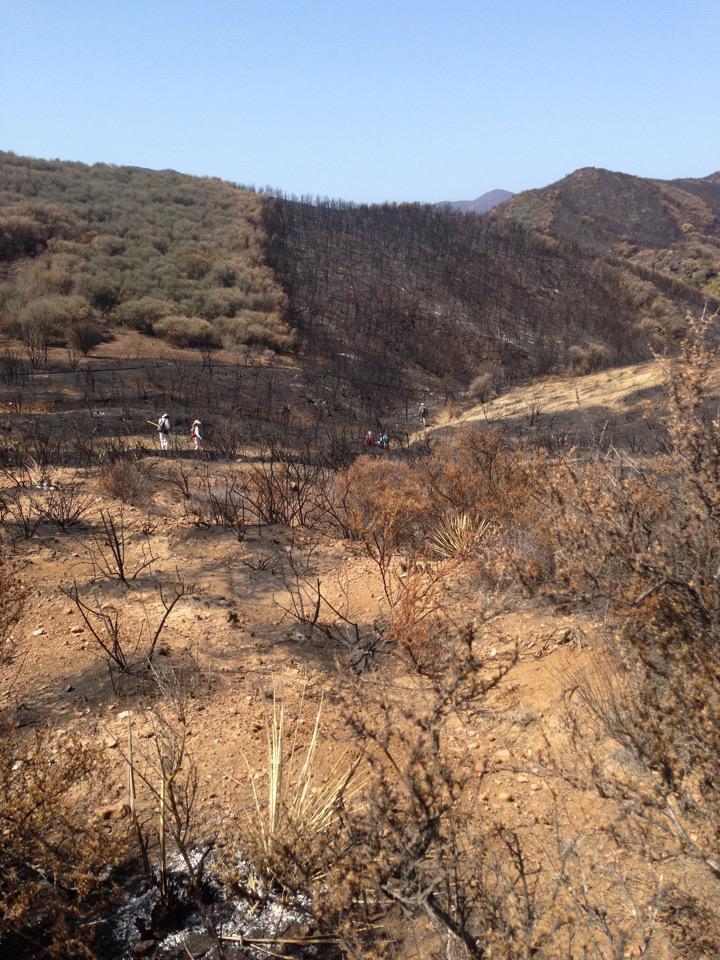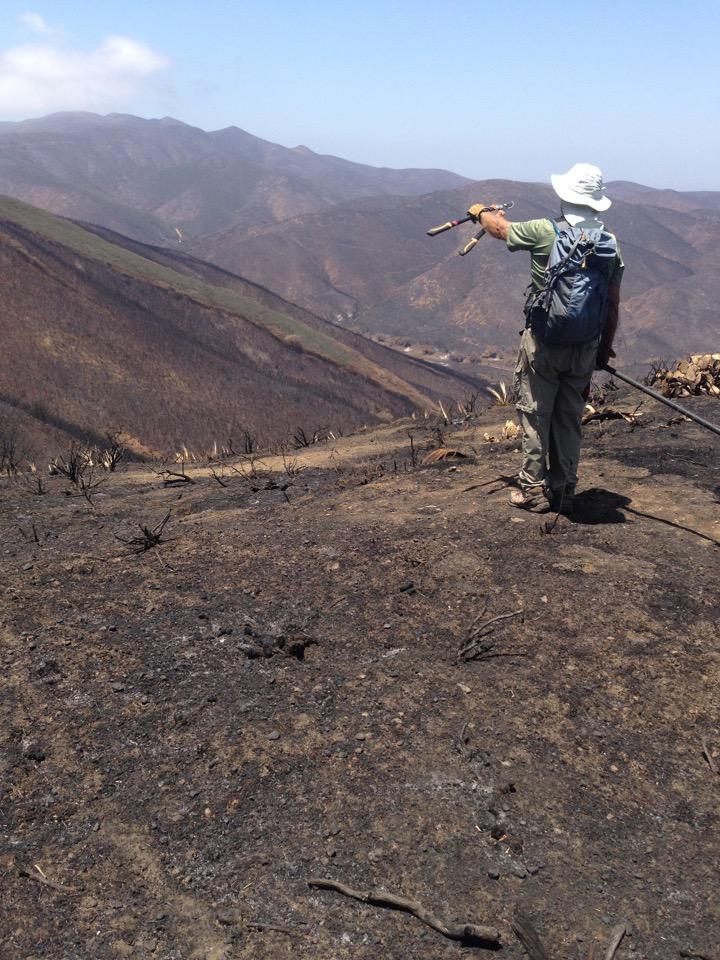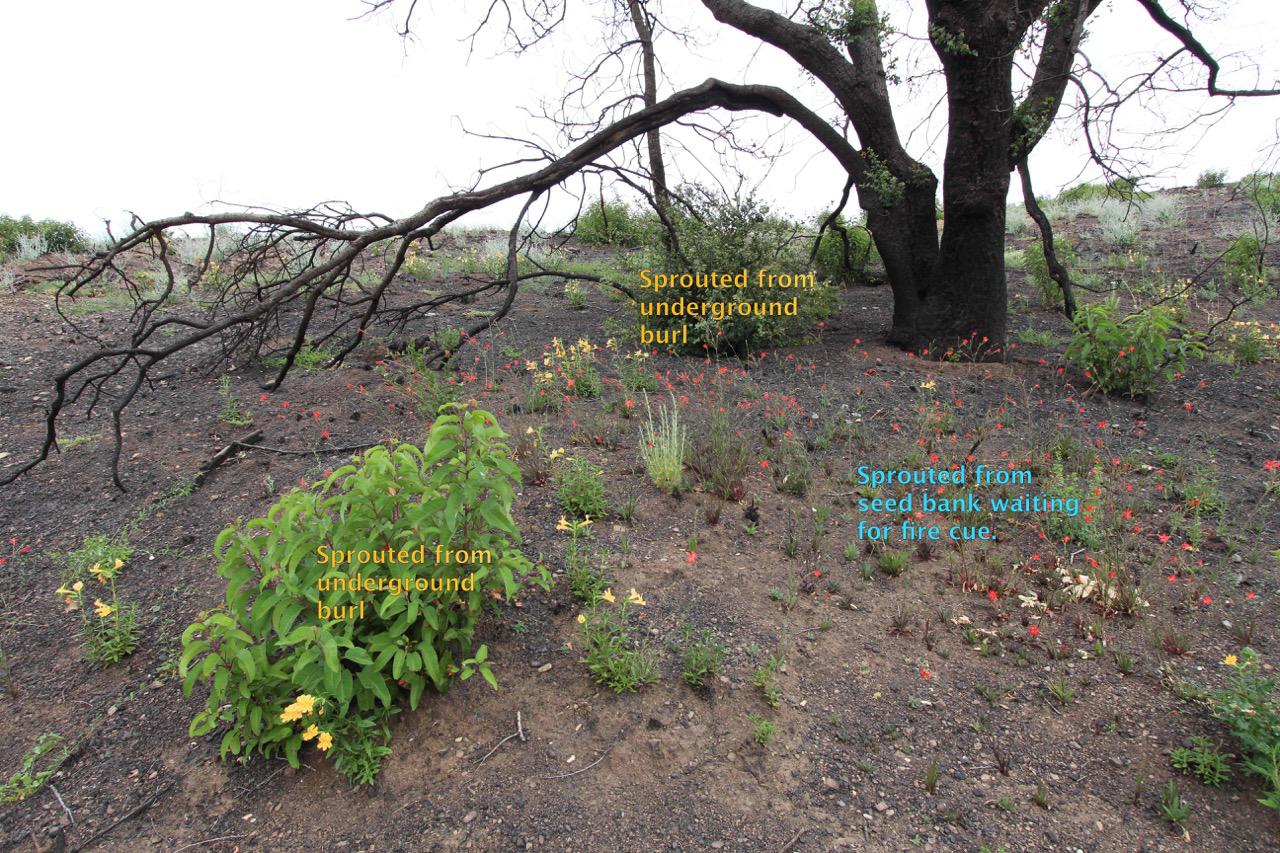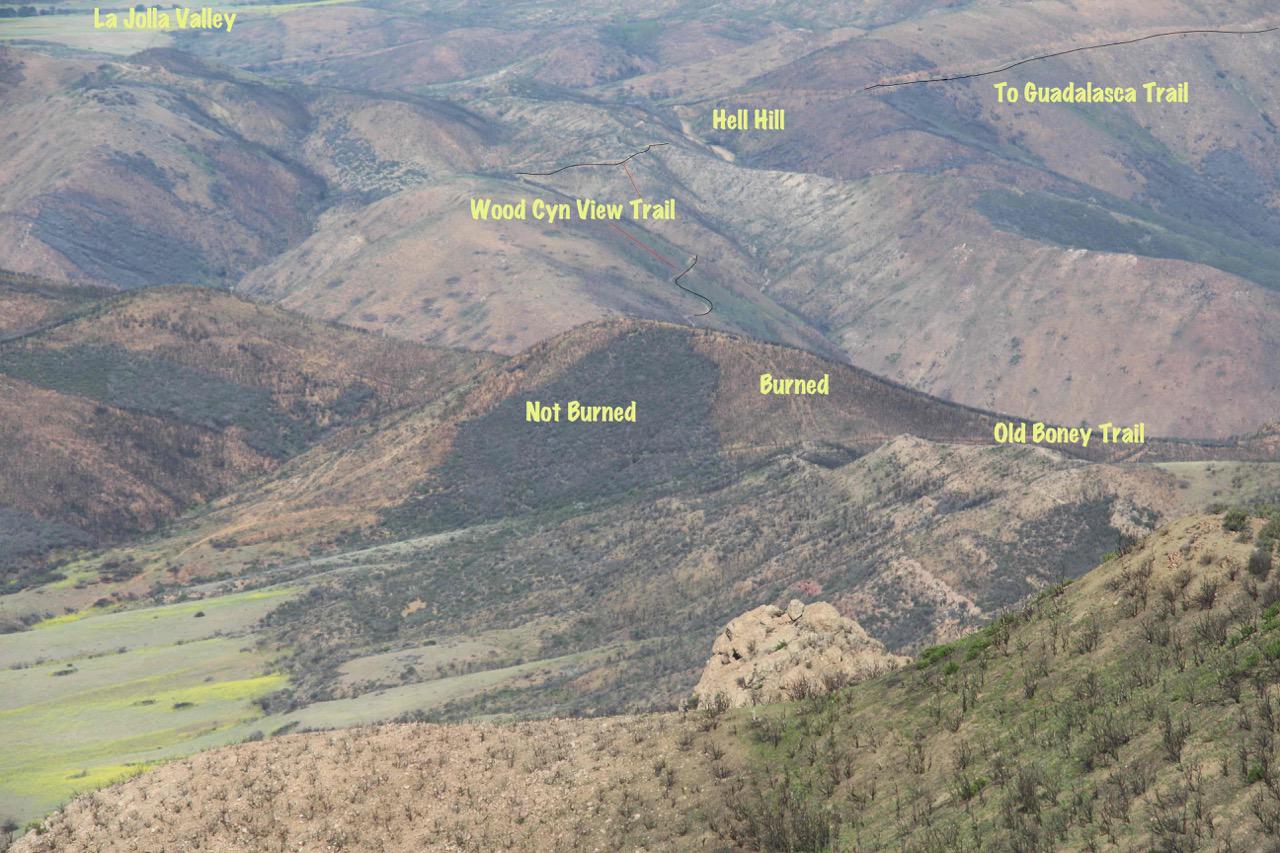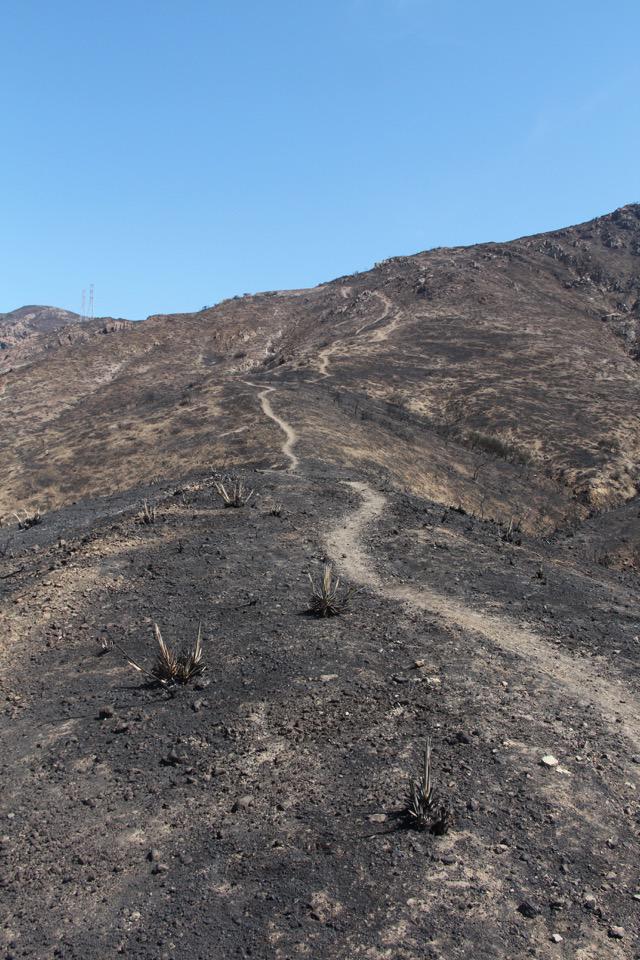Springs Fire - Five Years Later
-
Some Basic facts
- Began: May 2, 2013
- Ended May 12, 2013
- Acres Burned: 24,238
- Map of affected area
- 5th Largest fire in SMNRA
The devastating Woolsey Fire of 2018 burned hot and fast as it made its way from one side of the mountains to the other. How will our mountains respond to this event? If the past is a guide for the future, the race is already in progress to reclaim the scorched earth. Some plants burst out of the ground in high numbers and produce a generation or two before others overtake them. By the end of their race, these plants produced seeds in extraordinary numbers for deposit into Mother Natures' Seed Bank awaiting their next opportunity.
Over five years have passed since the Springs Fire swept through Point Mugu State Park. Plants have sprung up in the charred earth using a variety of strategies. Successful strategies have enabled individual species to survive and prosper through previous fires, droughts and times of abundance. The successful strategies we can see as we move through the burned areas. The unsuccessful ones - with any luck - may find their way into the fossil record.
Strategy Types- Crown sprouting from dormant buds on the root, e.g., Scrub Oak, Red Shank, Poison Oak, Chamise
- Plants that grow from banked seed - germination occurs after sensing a disturbance: fire, smoke or increased sunlight e.g., Ceanothus, Phacelias, Fire Poppy
- Plants that both re-sprout or germinate seeds, e.g., laurel sumac
So what did we observe in the Spring of 2014? Flowers not seen since the last fire were in abundance (universal in the year following a fire) and significant quantities of everything else. Of the fire followers, Yellow Throated Phacelia, Fire Poppy, Whispering Bells, and Globe Gilia were among my favorites. Another favorite - entire hillsides with alternating flanks of Lupine and Poppy in Point Mugu State Park.
As I wandered the canyons looking for flowers, it was hard to miss the stark differences between scorched earth and where there were plants. From afar, some hillsides could appear barren. Upon closer examination flowers were blooming. There were thousands and thousands of small flowers competing for their species to produce the next generation. In some locations, massive, spectacular blooms return from dormancy and challenge your ability to comprehend that all this beauty is part of a cycle that has been occurring for eons and that fire is an essential to this cycle.
The plants that can re-sprout staked out the ground around their crown/root systems. Where there was once a single trunk, many shoots now grow upward to get back on track moving towards their purpose in life - the propagation of their species. These plants have a tremendous advantage over seed germinated plants because of existing root systems and dormant buds already in place. The odds of any seed germinating and growing to maturity are enormous compared to sprouting from an existing stump. Toyon and Scrub Oak are two examples of this.
Many plants 'banked' their seeds in the soil after the last fire and lay dormant waiting for fire to provide an opportunity for them. Many of these plants appear only after a fire and then go dormant after a season or two. These short-lived "Annuals" may use hard coatings that the fire cracks or insulation which allows them to survive the heat. The fire/heat breaks through these protective barriers (which allows hydration) and germination to take place. Chemicals in the fire's smoke activate other seeds. The Nitrogen Dioxide in the smoke triggers a reaction in some seeds that 'the aboveground biomass' has burned and it is time to germinate.
Some plants both sprout and reseed after a fire. Sprouting from a stump is more efficient than germination from seed. Seeds become a backup solution should the root of the plant burn. Manzanita and Chamise use this strategy. Kind of like having a low-cost insurance plan.
Fires in chaparral used to occur every 30 to 100 years. Chaparral rebounds with this frequency of fires. Trouble occurs when an area burns too often (three to ten years) because this consumes the seed banks. Non-native grasses and other non-native species can often further their spread during this time. Invasive plants primarily grasses are flammable while forcing many native plants out which can increase the risk of future fires. Our chaparral environment is diverse and has adapted to a fire cycle. Some plants you see may not be back in your life and instead, live in seed form for many years. This year is shaping up to be a spectacular year for flowers - make time to enjoy their beauty and observe some of these adaptations!
References:
Wildflowers of the Santa Monica Mountains, by Milt McAuleyFlowering Plants: The Santa Monica Mountains, Coastal and Chaparral Regions of Southern California, by Nancy Dale


